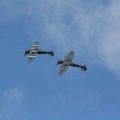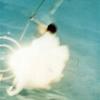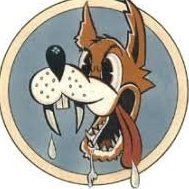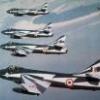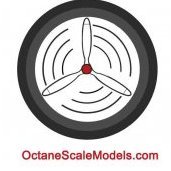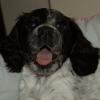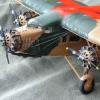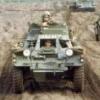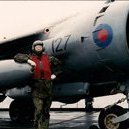Search the Community
Showing results for tags 'Mitchell'.
-
I see on Hong Kong models Facebook page announcing a B-25 and A-20 both in 1:48. I’ll certainly be interested in the A-20 👍 https://www.facebook.com/share/p/BxdjRdSMrEnxXSG1/?mibextid=WC7FNe
- 15 replies
-
- 1
-

-
- HONG KONG MODELS
- mitchell
-
(and 1 more)
Tagged with:
-
After the 1/32nd kits (link) Hong Kong (HK) Models is to release 1/48th North American B-25 Mitchell kits. First - ref. 01F008 - North American B-25J Mitchell Another large scale beauty transfered to the quarter scale! Source: https://www.facebook.com/worldhobbyminiatures/posts/pfbid023dMSKWePj68HzJaSg5oDEfFSwERNCFCaokysdsETDo483nTWhex6UzTVpeSow1Ybl V.P.
- 57 replies
-
- 23
-

-

-
The former WingScale XL 1/32nd North American B-25J Mitchell kit project ( http://www.hyperscale.com/2011/galleries/b25j32jv_1.htm ) will be edited by HK Models. Source: http://www.primeportal.net/models/thomas_voigt6/hk_models/ And a B-25H is also programmed http://www.hk-models.com/eng/p2_03.htm V.P.
-
This is the new Airfix kit straight out of the box, decals and all. It's a pretty good kit, although do pay attention to the fit of the interior, it's very tight and any misalignment here will have you sanding away at the fuselage seam lines. Weathering is pretty heavy as I read these aircraft were worked pretty hard. Colours used were Tamiya Olive Drab over Vallejo Air Neutral Grey.
-
B-25 Mitchell Wheels (7466 for Airfix Kit) 1:72 CMK by Special Hobby The new Airfix 1/72 B-25 is a great kit out of the box, the aftermarket manufactures are now starting to offer upgrades for the kit, and this new set from Special Hobby in their CMK range offers new resin wheels. There are two main wheels and two nose wheels with a choice of hubs available for the front wheel. Casting quality from CMK is first rate. Conclusion This set offers a quick drop in upgrade to the kit parts. Recommended. Review sample courtesy of
-
B-25C/D Dinghy Pack (for Airfix Kit) 1:72 CMK by Special Hobby The new tool from Airfix is very welcome, The dinghy pack on the B-25 is housed in a prominent position on the top of the fuselage for easy access when ditching and this set provides the stowage space for the pack, the pack itself and the cover. It will make a nice addition to an aircraft displayed on the ground. All of the parts are very well cast with minimal clean up being needed. Review sample courtesy of
-
Hello All, Was there an OTU for the Boston and Mitchell bombers in England? If not, from where would replacement aircrew have come? TW
-
B-25 Update sets & masks 1:72 Eduard for Airfix Kit The new Airfix B-25 is a cracker of a kit, however that has not stopped Eduard from wanting to add their own brand of magic to the kit. Update Set (73628) Inside there are two frets, one coloured and one not. The coloured parts are mainly for the cockpit including a new instrument panel, sides panels, and various levers. Also seatbelts for the front seats, and parts for the seats themselves. There are parts for the nose including ammo boxes and feed chutes for the nose gun, and rear gun. There is a new wiring harness for each engine, and inside the main fuselage many panels for the side, as well as a crew access ladders. The set is rounded of with additional parts for the landing gear. If the modeller only wants the the cockpit parts then they are available as a Zoom set. Full Set ZOOM Bomb Bay (72667) This set really does what it says on the packet it contains a complete new bomb bay and bay doors for the kit. Some fo the kit parts are kept and enhanced by the PE but large parts need to be removed to be replaced by the PE. New fins and arming vanes are also supplied for the bombs. Masks (CX507) Eduard provide masks for the extensive glazing of the B-25 and the wheels. Review samples courtesy of
-
Hi All, I'm trying to find some info on the 5 ex-NEIAF Mitchells that ended up at 3 PRU, 681/684 Sqn in India. I've managed to find a couple of b/w images of a Royal Blue one and a later PR Blue example but would like to know the camera and fuel tank fit on them... were they mounted in the bomb bay or fuselage, did the aircraft have a fuel tank in the bomb bay too, was the belly turret deleted and faired over? I hope you can help a bit Cheers Craig
-
Hi Folk,s.this kit has sat on the shelf at my LMS for a very long time so with other projects reaching completion time I thought for something different.The kit's origins lie back in the late seventies/early eighties when Monogram in my opinion were releasing the best kit/s of the time with some lovely detailing, now they do tend to get overlooked by many due to the advances in tooling and newer releases making them look pre-historic by comparison! So with that in mind let,s give it a go.I note some AM decals are available for the J model for the RAAF for just a few quid so still unsure whether to go for that scheme or the box art scheme. here is said box art. For a forty year old tooling some still nice touches. Main parts trimmed off those massive sprue gates. Two well molded clear sprues supplied. And a well printed decal sheet. So that's the basics hope to get a start in a day or two,thanks for looking in.
-
So, a friend referred me to this group and I thought I would share this build. I have been modeling for about two years and this is my first go with a 1/72 bird. I love the Mitchell and we have one locally. Here are a few wip shots of my bird. Hopefully the images load... Enjoy.
-
B-25G "Shark Mouth" 1:48 Academy The B-25 Mitchell was one of the best known medium bombers of WWII, starting with the daring raid on Tokyo that began on an aircraft carrier of all places. Designed by North American, it was hastily pressed into service at the beginning of America's involvement with WWII with well over six thousand airframes constructed, and many variants fighting in all theatres of the Second World War. The B-25G was sometimes referred to as the Strafer, as it was heavily modified in the shortened nose to mount a large 75mm cannon, in a similar fashion to that mounted in the TseTse Mosquito. It also carried either two or four 0.50cal machine guns in the nose, which were used partially for ranging of the main gun, the dorsal turret and tail turret, which was heavily blended into the tail fillet. The ventral turret was retractable, and additional fuel was carried to extend range in the "dirty" air that is found at lower altitudes. The forward cabin was also given a grafted on applique armour panel to protect the pilots, and the bomb bay could still be used for attacking ground or sea borne targets. The Kit The plastic within the box is from the old Accurate Miniatures mould, and when I say old, that's not meant as a disrespectful term, just a case of passing time. Inside the large top opening box are eight sprues of medium grey styrene, a sprue of clear parts, decals, instruction manual and separate paint and markings guide. The good news is that the passage of time hasn't diminished the quality of the moulds, and they are still as crisp as ever. If you're familiar with Accurate Miniatures' work, you'll know that their kits were very well regarded, and you can see why when perusing the sprues. Detail is crisp and there is a lot of it in all of the right places, which leaves the competition in its wake. There is fairly comprehensive interior included with the kit, which starts with the cockpit, with a decal for the clear instrument panel, which also has the instruments in raised relief. The pilots' seats are in one piece each, and that has resulted in a pair of shallow sink marks right at the base of the seat back, which can be hidden either with seatbelts, additional putty cushions or a combination of the two. Under the cockpit floor is a fair representation of the M5 gun, which will need its barrel drilling out for additional accuracy. It is kept in place by a large C-profiled "girder", which is made of one flat piece and is folded into shape in the same way as you would fold Photo-Etch (PE) metal parts. How well the joint will hold up to bending is guesswork, but the part is thin, so should be ok if you fold it once and leave it folded. Behind the cockpit, through an open bulkhead is the wing box and bomb bay roof, and from each side extends a small spar to hold the wings firmly on the fuselage. The dorsal turret is built up and installed on a tray with the ventral turret underneath, with a blanking plate provided in case you want to show it retracted. Various pieces of equipment, stowage and radio gear parts are added down the insides of the fuselage, which are decked out with fine ribbing detail where appropriate and an approximation of padded sound insulation here and there, although there are a couple of ejector pin marks that may be seen by the intrepid viewer. A few side windows are also inserted from inside with stepped edges to mate with the edge of the fuselage - for whatever reason there's even one next to the Elsan toilet, which is also supplied, although you'll have to fabricate your own loo roll! The instructions show the nose wheel added before the fuselage is closed up, but leaving it out might be tricky due to the small aperture in the fuselage bottom. A little test-fitting will help with that decision. All of the small assemblies are fixed into one side of the fuselage, which then closes up, trapping them in place (hopefully). The sides of the bomb bay can be added after the fuselage is closed up, with the nose also being added at this time. Again, a single cruciform part is folded up into an ammo box a-la PE, placed on top of the gun-pack, and cemented into the floor of the gun bay. This has the lower fairing added, and the optional upper fairing attached if you are consigning the guns to darkness. The canopy is a single piece, and you have several on the sprue to choose from, so make sure you select the correct one. The applique armour is simply glued to the side of the fuselage, so check your references and ensure you have it in the correct place before gluing. The H-tail is made from a single lower part that sits in a recess on the rear fuselage, with the upper parts in halves with either a raised glazed part for a manned position, or a flat panel where no gunner was carried. The wings build up as separate assemblies that slide onto the fuselage once completed, kept in line with the aforementioned spars. The wing halves fit neatly together and replicate the familiar aggressive anhedral of the outer wing panels nicely, the nacelles being two halves that install from under the wing, with a front panel that mates with the engine cowlings. Inside the cowling are some rather nicely moulded engines, with both rows of cylinders depicted, as well as the wiring harness and reduction gear bell housing. The cowlings are handed, so ensure that you place them correctly, and add the little hollow exhaust fairings into the depressions around the circumference of the cowling. The main gear legs are added later, as the B-25 had a very small area of the bay open with the gear down, enabling the leg with its separate oleo-scissor link to be inserted and mounted in a large cuff moulded into the underside of the wing. The small door is then added, hingeing to the side. The tyres are moulded in halves with a pronounced flat engineered in, plus separate hubs for extra detail. They should suffice for most of us, but I have no doubt that Eduard will be along with a resin set to improve the detail and remove the task of hiding the seam. The bomb bay has room for either four small bombs or depth charges, or two larger bombs, which have separate fins, while the others have them moulded in. They are placed offset along the wall of the bomb bay with their mounting pins at a 45o angle, which could be a bit fiddly with the fuselage closed up. The bay doors are separate parts, and forward and aft are a pair of crew access ladders with moulded in doors. You'll have some work ahead of you if you want those to be closed up. The build is finished by the addition of a tail bumper, the single piece props, aerials and pitot probes. There are quite a few parts unused with this edition of the kit, amongst them being the oft seen cheek mounted gun packs that gave the Mitchell extra punch, but neither markings options carry them in the accompanying documentation. Markings There are two options available from the included decal sheet, which is printed by Cartograf and these options are as follows: 9th bombardment Group, AAF Tactical Centre, Orlando, Florida, October 1943 (S/N 42-64758) - olive drab over grey with wavy demarcations and grey leading edges to the wings and tail. Shark mouth motif on the nose. 820th Bombardment Squadron, 45th Bombardment Group, marshall Islands, December 1944 (S/N 42-64896) - olive drab over grey with green mottle to the leading and trailing edges of the flying surfaces and vertical tails. Little Joe artwork on the fuselage side. Other than the defining markings and national markings, there aren't many more decals supplied, except for a set of prop stencils and maker's marks. The instrument panel decal is simply black with white faces, and might look better mounted behind the clear panel, but that would make painting a little more fiddly. A pair of simple seatbelts are also included, but apart from their two-dimensional look, they're not especially endearing. The quality of the decals is excellent, with good register, colour density and sharpness that you would expect from the masters at Cartograf, who have a very strong grip on the decal printing market due to their reputation for quality products. Conclusion Age hasn't really dulled the appeal of this kit, although a few areas could do with a little extra work to truly bring them up to the latest standards. The exterior detail is certainly up there with the best, with crisply engraved panel lines and petite rivets giving a good scale impression that should look great under a few coats of paint. Highly recommended. Review sample courtesy of
-
While some of you already noticed in my recent Herc post, I also got a real treat last summer. We had a visit for one week by bombers from the Commemorative Air Force. B-17G Sentimental Journey. I saw her the last time she was in Winnipeg. Though that was almost twenty years ago! Unlike me, the B-17 does not look a day older. And for her first time in The 'Peg, B-25J Mitchell: Maid in the Shade. This B-17 arrived in the PTO too late to see action and was used largely for photo mapping after hostilities had ended. The B-25 however was a real honour to see. She is a genuine combat veteran. She flew 15 combat missions over Italy in late 1944. Including one mission where she was the only ship out of four to return home. You can still see where bullet holes were patched. And I'm told a fair bit of flak was taken out of the tail during restoration. She wore Battle Number 18 in World War II and she still wears that number today. I brought my camera to work the day these two were expected to depart. The B-25 had a minor technical issue so she stayed in our hangar for a few extra days. I was thrilled! There was a combat veteran B-25 parked four feet from my locker! Trevor is in the tug as Brandon wing walks a legend. 20150706-DSC_5682 by _m_sinclair, on Flickr 20150706-DSC_5689 by _m_sinclair, on Flickr Why yes, I did have just the best day ever at work! 20150706-DSC_5696 by _m_sinclair, on Flickr Dan enjoying the day. 20150706-DSC_5702 by _m_sinclair, on Flickr 20150706-DSC_5712 by _m_sinclair, on Flickr 20150706-DSC_5722 by _m_sinclair, on Flickr Trevor admires the legend. 20150706-DSC_5723 by _m_sinclair, on Flickr I was tempted to get much closer with engines running. But I didn't want to alarm the crew so I kept a respectable distance. Next time, closer! 20150706-DSC_5746 by _m_sinclair, on Flickr 20150706-DSC_5758 by _m_sinclair, on Flickr 20150706-DSC_5767-2 by _m_sinclair, on Flickr Such a glorious sound! 20150706-DSC_5774 by _m_sinclair, on Flickr Volunteer from the CAF ground crew walks past. 20150706-DSC_5790 by _m_sinclair, on Flickr 20150706-DSC_5791 by _m_sinclair, on Flickr 20150706-DSC_5822 by _m_sinclair, on Flickr Till we meet again. 20150706-DSC_5855 by _m_sinclair, on Flickr Thanks for looking. -matt
- 10 replies
-
- 9
-

-
- B-17
- Flying Fortress
-
(and 4 more)
Tagged with:
-
This will be my first "big" project. Reason being, I know this kit has some shortcomings that will need to be dealt with. My first impressions upon opening the kit was the rivets all over the wings and fuselage, and apart from the control surfaces, lack of any kind of panel lines. My first task will be to sand off most of the rivets (there's a profile of the plane in the Squadron Signal book showing panel lines and rivets). Most rivets on the plane would be flushed, but I will present them like conventional domed rivets. Once done I will attempt to scribe the panel lines myself (first time attempting it). This might be a complete failure yet, so don't watch this space too closely I have set about 3 weeks aside just for this. I have not yet decided what I'm going to build either, but definitely not one of the options that came with the kit, and not a silver plane.
-
Hi everyone, I wanted to do a project which required a lot of scratch build to compare to the other offerings (Hasegawa etc.). The Airfix kit was perfect for this since it was, 1. bare basic and, 2, extremely inaccurate. I've attempted to fix some of these inaccuracies (not all) to produce a result that is comparable to the better B-25 kits out there. In the end, I don't think I achieved this result. I did however enjoy it, and did end up with a result that an OOB Airfix B-25 cannot compare to. I also learned a lot of new skills and have already started applying what I have learned on my latest build. Please visit the WIP thread if you are interested in the build details. This is a B-25H Mitchell of the 12th BG, 82nd BS based in India 1944. This is surely a Mitchell that has not been built a lot. I did end up finding proof that this B-25 existed, though no proof of what it looked like (which also means no proof that this is NOT what it looked like ) I hope you enjoy looking at these.
- 13 replies
-
- 20
-

-
Well She is finished. Big Bad Bonnie was the first B-25 i ever saw flying. Back in the early 80s at Stapleford in Essex. When Kitsworld produced the decals i new i had to build one. This one came up on ebay for a very good price so i snapped it up. The build went OK but it was one of those models where i had bad luck along the way. First of all i accidently poked the seats out after the model was already finished. This meant i had to get them back in through the turret opening , then the dog got hold of the nose glazing and cracked it. Luckily my friend had a spare one , then one of the scratchbuilt exhausts fell into the rear of the engine , which meant i had to pull the engine off to get it back out. The model Has been modified to represent the TB-25 , so i had to remove some exhaust stubs form the cowlings and make a new exhaust. The hardest part was scratchbuilding the new taller squarer carb intakes. It is fitted with SAC metal legs. I had seen and heard bad things about these but mine were perfect. The noseweight is the profimodeller one but i needed to add more to it so be aware! Wheels are the superb Brassin one. Prop blades are loon models and of coarse the decals from Kitsworld. Im very please its done , but im starting to wish i had gone for a 1/48 one. Its a bit large and i dont really know where to put it!
- 16 replies
-
- 17
-

-
Hi, It happend, that majority of not-posted yet models are American machines. Moreover - they are rather typical. Today I would like to present model of North American B25H-1 Mitchell in markings of 498 Squadron 354 Group, 5th Army, New Guinea, 1944. Individual name of machine "Clana Louise" In time when I made it, the Italeri was the best kit of B25, no Hasegawa kit was issued yet. It was about 2000. Free hand painting with brush of nose art and individual name. Comments welcome Regards Jerzy -Wojtek
-
The wee fella had been looking for a calendar with pictures of planes on it for me (he's a great wee bloke) and bought me the Warbirds 2015 calendar. The pic for February is below. The caption says it's a "North American B25 Mitchell". Now I'm no expert on WW2 American planes but I'm pretty sure the pic isn't that of a B25 Mitchell... Unless it's some kind of early prototype. The fuselage shape is wrong, wings are in the wrong place, the fins are the wrong shape, nacelles and props are wrong etc etc etc. Can anyone shed some light on what the plane in the picture actually is?
-
Hi! This is Hasegawas B-25H finished in Tamiya colors. I used Eduard photoetch for interior details, and Quickboost cowlings. A bit green OD, but I pretend this is the ANA 613 color Any comments appreciated Best regards Rune Haugen Norway
- 12 replies
-
- 21
-

-
North American B-25H Mitchell 1:32 HK Models History The B-25G (NA-96) was the first version of the Mitchell to introduce the 75-mm cannon. It was intended for use in anti-shipping strikes in the South Pacific. In the B-25G, a standard 75mm Army M4 cannon was mounted to fire forward through the nose. This gun was a revision of the famous French 75 of World War I. The basic concept had been found to be feasible via a series of experiments on a converted Douglas B-18A Bolo. However, since the effects of the heavy muzzle blast on the nose structure of the Mitchell were unknown, a complete forward fuselage section was built and trucked to a secret area in California where firing tests could be conducted out of the way of prying eyes. Guided by these tests, the structure was progressively strengthened until full resistance to prolonged firing of 75mm rounds could be demonstrated. B-25C-1 serial number 41-13296 was modified as the XB-25G prototype. It was fitted with a 75mm M4 cannon which was 9 feet 6 inches long. The bombardier-equipped transparent nose was replaced with a shortened armoured solid nose that reduced overall length to 51 feet. The cannon was mounted in a cradle in the lower left-hand side of the nose. The cradle extended underneath the pilot's seat and a spring mechanism formed part of the gun mounting to take up the 21-inch recoil. The B-25H was an improved version of the B-25G. The fixed nose armament was increased to four nose-mounted .50-cal. machine guns and four more .50-cal. machine guns in fuselage mounted pods. The cannon was changed from the G models M4 to the lighter T13E1. The top turret was moved to the forward fuselage and the lower turret was removed and replaced by a single .50-cal. machine gun in each of the two waist positions. A tail turret housing a pair of .50-cal. machine guns was added bringing the firepower total to 14 .50-cal. machine guns plus the 75mm cannon. The aircraft could also carry up to 3,200 pounds of bombs. The prototype H model was modified from a block 10 B-25C and first flew in May 1943. This aircraft had improved Wright R-2600-20 radial engines, but all production aircraft were completed with the standard Wright R-2600-13 radials used on all B-25s since the -C model. The first of 1,000 production B-25Hs first flight was on July 31, 1943. The five-man crew consisted of the pilot, navigator-cannoneer-radioman, flight engineer-top turret gunner, waist gunner-camera operator and tail gunner. Three of five crew members had multiple jobs; there was no co-pilot or bombardier and only one waist gunner. The last H model built was covered with the signatures of the North American Aviation factory workers and nicknamed "Bones." The aircraft remained this way throughout its combat life while assigned to the 12th Bomb Group in the China-Burma-India Theatre. The Model Since this is the third iteration of the B-25 from HK Models most modellers will be used to the size of these kits. For those who aren’t familiar with them then it should be noted that this kit is big and it comes in a big box. Lifting off the box top, with its dramatic artists impression of the aircraft on a strafing run, reveals the actual box with its tabbed flap which when pulled out allow the lid to be folded open. Finally the model is revealed in all its sizable glory, well packed with the more fragile parts protected in a separate compartment. I may have mentioned how big this kit is, well it seems to be mirrored in the size of the instruction booklet, which is almost A3. Construction begins with the assembly of the interior details, building up the upper turret and tail gun mounts, with some very well moulded .50cal breeches that have slide-moulded slots in the front of the breech to facilitate adding the barrels later in the build which will be very handy. It’s then onto the cockpit assembly, in which the detail is superb. The central control panel is festooned with knobs and levers, all of which are separate, with the pilot and co-pilot's seats being placed on their bases, with a pair of lightening holes in the bottom, and bracing detail added to the rear. There are a couple of ejector pin marks on the backs of the seat that you may want to deal with if you think they'll be seen once the rear bulkhead is in place. A full set of PE seatbelts are included, although their positioning in the instructions looks a little posed, so you might want to alter them to add your personal touch. The twin control columns have separate yokes, which you can pose angled to one side if you're planning on offsetting the controls. The cockpit is finished later with the addition of the rear bulkhead, and the multi-part instrument panel, which has quite an interesting approach to achieving a realistic set of instruments. The main panel has lots of cut-outs for the dials, and a flat backing part affixes behind it. There is a decal that you can apply to the backing part, which should then line up all the instrument faces with their corresponding holes once installed. That also allows you to paint the instrument panel without worry about making a mess of the dials. Just leave them out until the job is done. The next section of the build deals with the bombs and their racks. There are parts for six bombs included, with the main body built up from two halves, as are the rear stabilising fins. Before joining the two, a small and nicely detailed arming vane is added, which improves the realism somewhat. Detail on the fins is nice, because of slide-moulding again, allowing rivet detail to be added where it wouldn't otherwise be possible with traditional moulding. Each trio of bombs attaches to a highly detailed ladder style rack with two pins, which in turn affixes to the inside skin of the bomb bay, along with a few additional detail parts to busy the area up. The bay roof and some really nicely detailed bulkheads finish off the assembly along with a few PE parts, resulting in a really well appointed bomb bay. This is set aside for a few steps while the interior of the fuselage is decked out. The fuselage halves are rather large, and as well as all that detail on the outer surface, there is moulded in cockpit detail in the forward part, and lots of strengthening ribs throughout the rear of the fuselage. It appears that the central portion of the fuselage away from the bomb bay has been left rather bland in order to keep the retail price down, but this area can be completed by the fervent scratch builder, and there are bound to be aftermarket sets released to improve this area. Some boxes adorn the cockpit area on each side, and the waist stations with their .50cal guns and ammo feed chutes are supplied, as well as the ammo boxes. These parts are very nicely moulded, and thankfully the detail will be seen through the window once construction is completed. Before the cheek gun packs can be fitted, their affixing holes need to be drilled out. In order to finally close the fuselage, the cockpit area, with the nose gear leg attached to the underside, the upper turret mechanism, the bomb bay and the rear gunner's position all have to be placed in one fuselage half, and a staggering 80 grams of nose weight to ensure that she doesn't sit on her tail once she's done. Having read a few build logs, it seems that this may not be enough as the balance is still pretty fine, so you may want to try and fit more weight wherever possible. The completion of the rear-gunner's position includes the long lines of ammo that feed from the rear, and a little stool for the gunner to perch on during the active part of the mission. The large H-tail is next, which spans the full length, and incorporates the top of the rear fuselage, including the conical bulge to accommodate the rear gunner. The rudder parts attach using traditional slots and tabs, and the rudders and elevators can be left unglued if you wish but would probably be best glued into the position of your choice, just don’t forget to check how you have the cockpit controls set. Separate trim tab actuators are included to add detail to this area, and once complete it is installed on the top of the rear fuselage along with the glazing and the rear gun's flexible mounting cover. Moving forward, the cockpit glazing is installed here too, and a choice of both the nicely detailed turret interior and glazing for the upper turret, or the blanking plate is made. Aft of the turret there are a pair of bullet fairings, and a choice can be made as to which type to use based upon your references. The next step is to add all of the bay doors and fairings to the underside of the fuselage, but some of this is probably best left off until near the finish of the build. The bomb bay doors are nicely portrayed, with an inner skin perforated with lightening holes sitting within each door to add depth and interest. If you're closing the bomb bay doors, the un-skinned outers are used to cover the area. The crew access ladders can be posed open or closed, although if choosing to leave them open, it invites the viewer to peer inside, which might expose the slightly barren interior. The wings have a full set of poseable flying surfaces, with spoilers and actuator rams includes, which gives plenty of options for posing them at an appropriate angle, as if the crew have just switched off and left the aircraft after a long mission. The leading edge of the wing has a landing light and intake installed, with a clear cover for the landing light that will need careful gluing to avoid fogging of the crystal clear part. The engines are a model in their own right, and are made up of a large number of parts. To do them justice, you'll need to research the colour of each part, as it would be a sin not to paint them well. The Wright R-2600 Cyclones are radial engines, and all 14 pistons are depicted in a very crisp moulding with separate push-rod covers for each one. Once both banks of cylinders are installer, the exhaust manifold and wiring looms are installed, then the aforementioned push-rod covers, where you'll have to be careful to get them correctly oriented. The whole engine then slots inside the skeletal cowling, to which the cowling front is added, and then the individual exhaust stacks are fitted, some of which projected the thunder of the engine into the fuselage, deafening many a crew member. The cowling panels are then installed, again in a specific pattern, and then the props are added, which are supplied as separate blades that glue into a 2-part central boss. The blades are keyed, which is good news, so construction will be fairly straight forward. I'd leave these off until later however, in case you break them during handling. The engine nacelles are next, and they were of a clean design, being very streamlined, even when the gear was down. This is a really odd construction step, which would have you install the landing gear strut directly into a slot in the underside of the wing, and then build up the nacelle, after which the two are brought together in a rotating manner, to enable the strut to pass through the small opening in the nacelle. The larger doors that open during the landing gear cycle are moulded closed, which shouldn't be an issue as it both saves fiddling trying to get the doors on closed, and also saved HK Models from having to detail the wheel bay that would most likely rarely be seen. The small doors are supplied separately, and have nice strengthening detail on the inside skin, and a scale thickness edge to add realism. The sprue gates have been cleverly placed inboard of the thin edge on a flat area of the panel, so that it can be easily be removed without marring the delicate edge of the part. Although adding the landing gear before painting is a little odd in my limited experience, the fact that the parts are sufficiently large to mask properly without risk of breakage makes sense, and also gives you something to perch the model on during painting without scuffing the fresh paintwork. The wheels are provided as halves, with nicely defined diamond tread patterns, which with careful gluing and alignment should survive the seam clean-up process. The main wheels have two inner hub parts that can be seen behind the outer hubs that are moulded into the tyres, and a central boss is applied to the outer hub face. The nose gear wheel is made up from two parts with the hubs moulded in, and an outer hub-cap is added to the assembly once glued together. The wheels should be put to one side until painting has been completed as it will save any further masking. The wings attach to the fuselage by mating with a large stub spar that is moulded into the fuselage sides, before completing the join you have to capture the inner flap section in its pivot points so that it can remain poseable once installed. The joints should be very strong, but I would be tempted to brace the fuselage sides against splitting the fuselage seam under the constant weight of the wings by inserting some rod between the two halves. This might not be necessary as the bomb bay may add sufficient strength to the area, so I would leave any decision until you're at that point of the build. The nose area of the B-25H is not only shorter than a standard B-25; it is also filled with machine guns not to mention the big cannon. The lower section of the nose is fitted with the .50cal gun shelf, followed by the four gun breeches. Above the breeches another shelf is attached and fitted with the ammunition boxes for each gun, with each box attached to the breech by an ammunition belt. Now, the ammunition belts are assembled out of upper and lower halves to enable HK to mould them with the correct shape to fit between the guns and boxes. The upper nose section is fitted with an inner skin which, like the bomb bay doors is nicely detailed with the ribs and stringers. The upper nose can be posed open with the use of two struts should the modeller choose to do so. Before fitting to the front fuselage the cannon muzzle is attached from the inside and an HF aerial mast, with added light fitting is attached to the port underside, just aft of the cannon orifice. There is another HF aerial mast fitted on the underside of the fuselage just aft of the cockpit and two aerial wires will need to be manufactured to fit between each mast. With the nose fitted to the fuselage it’s just a matter of attaching any machine gun barrels left off during the build along with the wheels and the attachment of any further aerial wires. Decals As with the other B-25 kits there are only decals supplied for one aircraft, in Olive Drab over Neutral Grey, and sporting a large gaping mouth emblem, with separate eyes on the nose. The decal sheet is quite small for the size of the kit, and contains only national markings, unit and tail code markings, plus prop markings and two styles of instrument panel decal. Printed by HK Models themselves the decals look to be well printed, in good register and colour density. The only visible carrier film is seen on the tail code numbers, but since it’s not particularly thick it should settle down well on a good gloss coat of Klear or Alclad Gloss. Conclusion I just love these kits and once I get some space at least one will be built. But this is the one I’ve been waiting for, as I’ve always been fascinated with the fitting of large calibre guns to aircraft and it was the B-25H that introduced me to this idea. The kit is a bit of a compromise between detail and cost, but it does give the modeller the choice on whether to build as is, or heap loads more detail on it, especially in the fuselage interior which could certainly do with it. The aftermarket companies have already paid attention to the two earlier releases, with lots of lovely etch and resin, most of which will be just as relevant to this release. I hear there is also a conversion set coming out to enable the modeller to produce a PBJ-1H which would look great. Very highly recommended. The kit can be bought worldwide online, and in the UK from Hannants. Review sample is courtesy of
-
Hello modellers!, I am adding another newcomer to my american WW2 fleet This time it is B-25J from 447th BS - Corsica 'Ave Maria' s/n: 43-27636/II Kit: B-25J Hasegawa Scale: 1/72 Used colors: XF-62 post-shaded with various tones of olive drab/dark green: H304 - FS34087 H078 H064 H423 Fuselage bottom is sprayed with Alclad II Polished Aluminium in combination w/ Dark Aluminium. After-Market decals: Kits-World Photo etched metals: Eduard BIG-ED Thanks for all useful comments Peter
- 32 replies
-
- 14
-

-
North American B-25J Mitchell. Red Bull Revell 1:48 History The North American B-25 Mitchell was an American twin-engined medium bomber manufactured by North American Aviation. It was used by many Allied air forces, in every theatre of World War II, as well as many other air forces after the war ended, and saw service across four decades. The B-25 was named in honour of General Billy Mitchell, a pioneer of U.S. military aviation. By the end of its production, nearly 10,000 B-25s in numerous models had been built. These included a few limited variations, such as the United States Navy's and Marine Corps' PBJ-1 patrol bomber and the United States Army Air Forces' F-10 photo reconnaissance aircraft. The final, and the most built, version of the Mitchell, the B-25J, looked much like the earlier B, C and D, having reverted to the longer, glazed bombardier's nose, but with the -H version's relocated-forward dorsal manned turret. The less-than-successful 75 mm (2.95 in) cannon was deleted. Instead, 800 of this version were built with a solid nose containing eight .50 (12.7 mm) machine guns, while other J-models featured the earlier "greenhouse" style nose containing the bombardier's position. Regardless of the nose style used, all J-models also included four .50 in (12.7 mm) light-barrel Browning AN/M2 guns in a pair of "fuselage package", flank-mount conformal gun pods each containing two Browning M2s, located directly beneath the pilot's and co-pilot's compartment along the external sides of the cockpit, with the co-pilot's seat and dual flight controls restored to their previous cockpit locations. The solid-nose B-25J variant carried a total of 18 .50 in (12.7 mm) light-barrel AN/M2 Browning M2 machine guns: eight in the nose, four in the flank-mount conformal gun pod packages, two in the dorsal turret, one each in the pair of waist positions, and a pair in the tail - with fourteen of the guns either aimed directly forward, or aim able to fire directly forward for strafing missions. No other main series production bomber of World War II carried as many guns. In all, 4,318 B-25Js were built. Red Bull bought their example, having been discovered by their former Chief Test Pilot in 1994 and in 1997, after an extensive rebuild and reconstruction to a civilian version with a comfortable interior she was flown over to Europe and is now housed in Red Bulls Hanger-7. She is flown extensively around Europe, participating in many major airshows. The Model This kit has been around for many years, originally being released by Monogram way back in 1977. Throughout the years several variants have been issued, clear nosed, gun nosed and even cannon armed. In fact this version was previously released in a special edition of the Red Bull aircraft, (Flying Bulls), which not only came with, glue, pots of paint, but also spray cans for the silver, a poster, DVD and a can of Red Bull. Unfortunately this is a much paired down issue with just the glue, pots of pain and a double ended paint brush. The kit is moulded in silver styrene which has some very interesting swirls on almost all the parts. Considering its age, the moulds have stood the test of time pretty well. There is some flash on the smaller parts, but the rest are pretty clean. There are the large moulding lugs on the fuselage which seem to have been a part of the moulding process since the first issue. The detail does appear to have become a little soft and indistinct, it may be the colour of the styrene, but it just doesn’t seem as good as when I last built this kit. The panel lines are still raised, but even they don’t seem as bad as previous releases. If I recall correctly the fit of parts isn’t too bad once cleaned up, but this being a glass nosed variant expect it to be a tail sitter and the need to use the rear entrance door and steps as a prop, since there is very little room for any weight to be added in and around the nose, unless you block off the access trough. Construction starts with detailing the interior of the fuselage. Unfortunately this consists of the original boxes and such from the military version and not the customised civilian interior that this aircraft actually has. It’s not really a problem as not much can be seen, but it would have been nice to have it as an option, though not as cheap as just adding new decals to an existing kit. The cockpit floor, which is also the nose gear bay roof, is attached to the front and rear bulkheads and the nose access tunnel. To this assembly the nose wheel leg is fitted to the bottom, whilst the cockpit is made up of two seats, twin, control columns and the instrument panel with rudder pedals moulded pre-attached. There is definitely room for the modeller to add quite a bit more detail in the cockpit should they wish. The cockpit assembly is then fitted to the starboard side o the fuselage along with the bomb-bay bulkheads/wing spars. Before closing the fuselage up, the bomb-bay roof, upper turret blank, and as much weight as you can fit forward of the main wheels are fitted, whilst right aft, the holes of the ILS aerials should be drilled out. The wings, which are made up of upper and lower halves are joined together. To the two halves of the engine nacelles are glued together and attached to the wings along with the clear parts for the landing light covers. The main undercarriage consists of two wheel halves, the main leg and the retraction arm. The wheels have flat spots supposedly representing the weight on the tyre, yet there isn’t any discernible bulge on the tyre itself. With the wings fitted to the fuselage, making sure they are set at the correct angle the main undercarriage is attached to the nacelles along with their respective doors. The bomb-bay doors are then fitted, either in the open or closed position, but with little detail in the bay it’s probably best to close them up, although, having never built this kit with the doors shut I’m not sure how good the fit will be. With that done, the nosewheel door and forward access door are fitted. Moving aft, the vertical tailplanes are each made up of inner and outer halves which when glued together are fitted to the horizontal tailplane which is of and upper and lower construction, much like the wings. The completed tail assembly is then attached to the fuselage followed by the clear parts that would have made up the rear gunners position. Before starting the construction of the engines, the moulded intake at the top of the cowl flap section needs to be removed. Once this is done the engine, which is a basic part showing just the front bank of cylinders is fitted with the propeller shaft then attached to the cowl flap section. The cowling is then fitted and the whole assembly is attached to the nacelle. The new two part intakes are then added to the upper nacelle sections which are then fitted into position, followed by the attachment of the propellers. The side windows, where the waist gunners positions used to be are fitted as are several new auxiliary intakes and aerials around the rear fuselage. The nose section is then built up out of the fuselage section, floor, with attached bomb sight removed, and new padded couch and back rest. This is then attached to the forward fuselage and completed by the addition of the clear parts. The cockpit canopy is then fitted as are two new aerials just aft of the canopy. Construction is then completed by the addition of numerous aerials around the nose section, auxiliary intake just aft of the bomb bay, rear access door, pitot probe, ILS aerials under the tailplane and finally a new radar pod under the starboard wing. Decals The small decal sheet provides an alternative instrument panel, if painting the panel is not your thing, wing walkways, fuel filler cap markings, propeller warning stripes, propeller manufacturer markings, US flags and the distinctive Red Bull insignia for either side of the nose. The decals have been printed in Italy, so presumably by Cartograph. They are very clear, in register with good opacity as one would expect, and are on the glossy side. The backing film is very thin and there shouldn’t be any problem with silvering with the exception of the large Red Bull markings which may need a setting/softening solution, but since the aircraft is very glossy anyway the decals will have a good surface to settle down on. Paint In this release Revell also provide five pots of paint, a small Contacta glue applicator and a double ended brush, one end of which has been deformed in the packet. There’s definitely not enough paint to cover the model and from what I’ve heard Revell paints haven’t had the greatest of press, so it’s probably best to put them to one side and use your own favourite metallic paints. The paints that are included are:- • Two pots of Silver No 90 • One pot of Aluminium No 99 • One pot of Hellgrau No 371 • One Pot of Anthracite No 09 Conclusion I’ve always liked this kit and have built it in a number of its different releases. The model will be a great chance to use some of Alclads great products or Rub ‘n’ Buff, whichever you prefer, to get the silver work looking right. Just be aware of the age of the kit and the problems mentioned above. It is not state of the art and this release isn’t full of Red Bull memorabilia, but it will stand out in the collection if care is taken during the build. Recommended. Walkround photos available HERE Revell model kits are available from all good toy and model retailers. For further information visit
-
B-25B Pics taken by Darwin at the SAC Museum in Nebraska
- 2 replies
-
- 1
-

-
- North American
- B-25
-
(and 1 more)
Tagged with:

